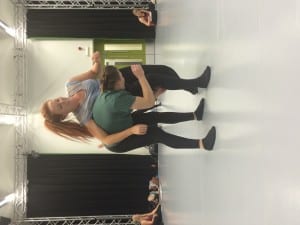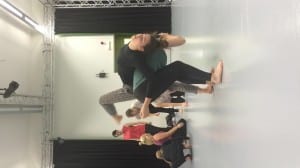The question that we posed for this research lab was:
How can we move fluidly whilst in contact out our partner and incorporate various levels?
and had several exercises to investigate this which were:
-Cat/Surface exercise
-Trying to move fluidly and constantly (while remaining in contact with our partners) by experimenting with the speed and tone of the work to see which one was the best for staying in contact.
-Beginning to incorporate lifts into the previous movement and experimenting with different surfaces of the body to assist this.
-Using the previous 3 exercises but now incorporating different levels into the movement. Once this was secure we experimented with traveling from point ‘A’ to point ‘B’.
We began with the cat exercise and agreed as a group that it felt really forced and unnatural to be in contact at all times during this. This therefore then lead to us becoming stiff and took away the fluidity of the movement. A way to avoid this clumsiness would of been to of allowed travel in the body however we had set ourselves a rule that we had to remain as static as possible to see the effects that this would have on our movement quality.

(The image above shows Toni and Charlotte performing the first exercise, it appears to be quite static, clumsy and not very fluid. This is something that we wanted to avoid so we changed the exercise.)
We then allowed travel/movement to be allowed into the cat/owner exercise to see the difference this would have on us and we saw a development instantly. The movement instantly became more fluid however we also noticed that out of habit we kept losing contact with each other and breaking off into small solo sections. This is something that we all need to work on improving individually.

(The image above shows Sophie and Charlotte doing the last of our exercises. We decided as a group that this was the exercises where we felt more comfortable and free to do lifts or balances so will continue extending this exercise in the upcoming weeks.)
We finally added a pathway that we had to follow in our duet. This had to be done at the same time as exploring different levels, using lifts and also remaining fluid for the remainder. I personally enjoyed this as i feel that i work better when i have more direction given to me. The only thing that i noticed about my movement after this however is that i have a tendency to try and rush movement to get it over with faster with a partner. This is something that i will work on myself.
Reading:
Albright, A. C., & Gere, D. (2003).Taken by surprise: A dance improvisation reader. Middletown, Connecticut: Wesleyan University Press. Pp.229-238

